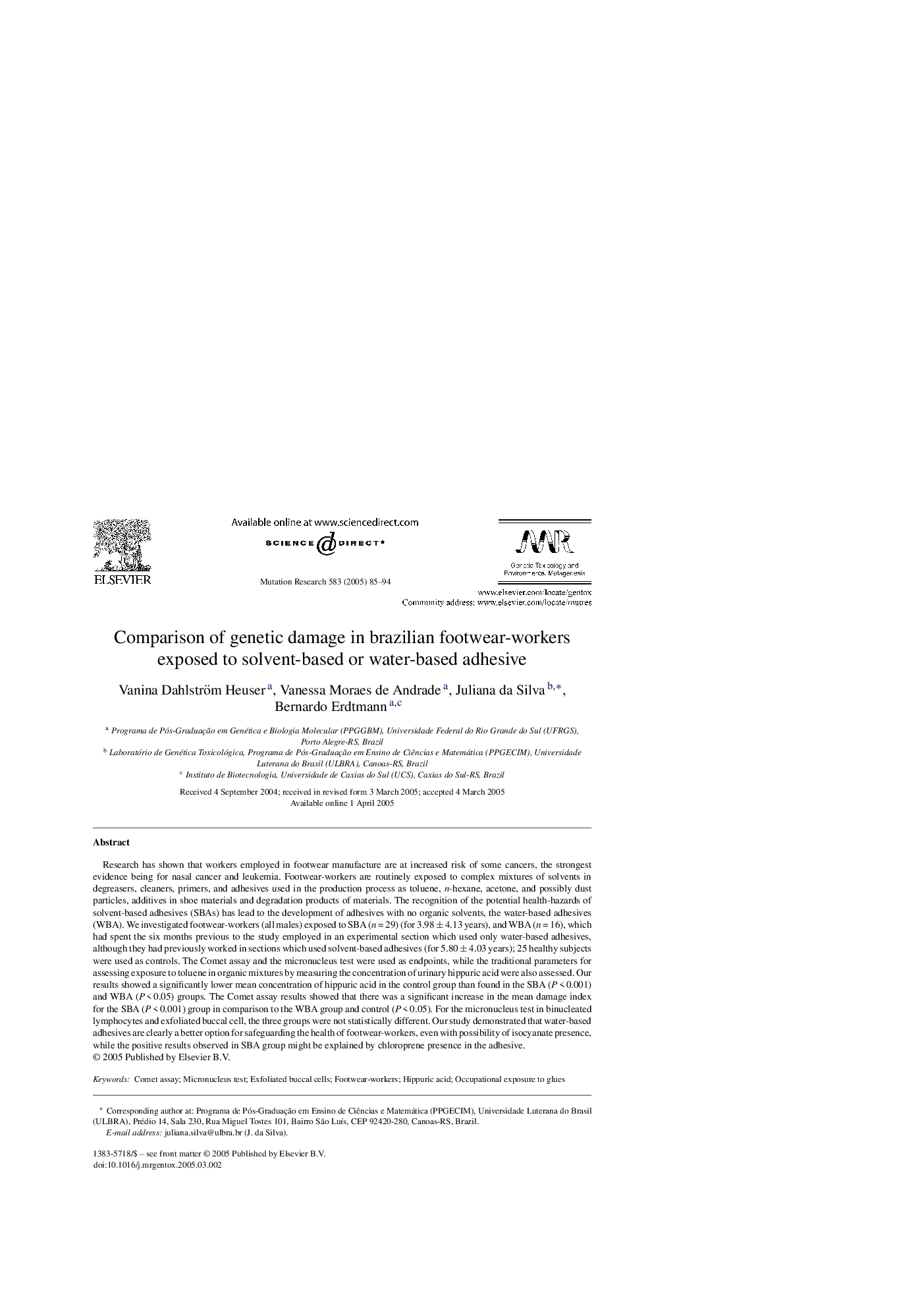| Article ID | Journal | Published Year | Pages | File Type |
|---|---|---|---|---|
| 10915055 | Mutation Research/Genetic Toxicology and Environmental Mutagenesis | 2005 | 10 Pages |
Abstract
Research has shown that workers employed in footwear manufacture are at increased risk of some cancers, the strongest evidence being for nasal cancer and leukemia. Footwear-workers are routinely exposed to complex mixtures of solvents in degreasers, cleaners, primers, and adhesives used in the production process as toluene, n-hexane, acetone, and possibly dust particles, additives in shoe materials and degradation products of materials. The recognition of the potential health-hazards of solvent-based adhesives (SBAs) has lead to the development of adhesives with no organic solvents, the water-based adhesives (WBA). We investigated footwear-workers (all males) exposed to SBA (n = 29) (for 3.98 ± 4.13 years), and WBA (n = 16), which had spent the six months previous to the study employed in an experimental section which used only water-based adhesives, although they had previously worked in sections which used solvent-based adhesives (for 5.80 ± 4.03 years); 25 healthy subjects were used as controls. The Comet assay and the micronucleus test were used as endpoints, while the traditional parameters for assessing exposure to toluene in organic mixtures by measuring the concentration of urinary hippuric acid were also assessed. Our results showed a significantly lower mean concentration of hippuric acid in the control group than found in the SBA (P < 0.001) and WBA (P < 0.05) groups. The Comet assay results showed that there was a significant increase in the mean damage index for the SBA (P < 0.001) group in comparison to the WBA group and control (P < 0.05). For the micronucleus test in binucleated lymphocytes and exfoliated buccal cell, the three groups were not statistically different. Our study demonstrated that water-based adhesives are clearly a better option for safeguarding the health of footwear-workers, even with possibility of isocyanate presence, while the positive results observed in SBA group might be explained by chloroprene presence in the adhesive.
Related Topics
Life Sciences
Biochemistry, Genetics and Molecular Biology
Cancer Research
Authors
Vanina Dahlström Heuser, Vanessa Moraes de Andrade, Juliana da Silva, Bernardo Erdtmann,
